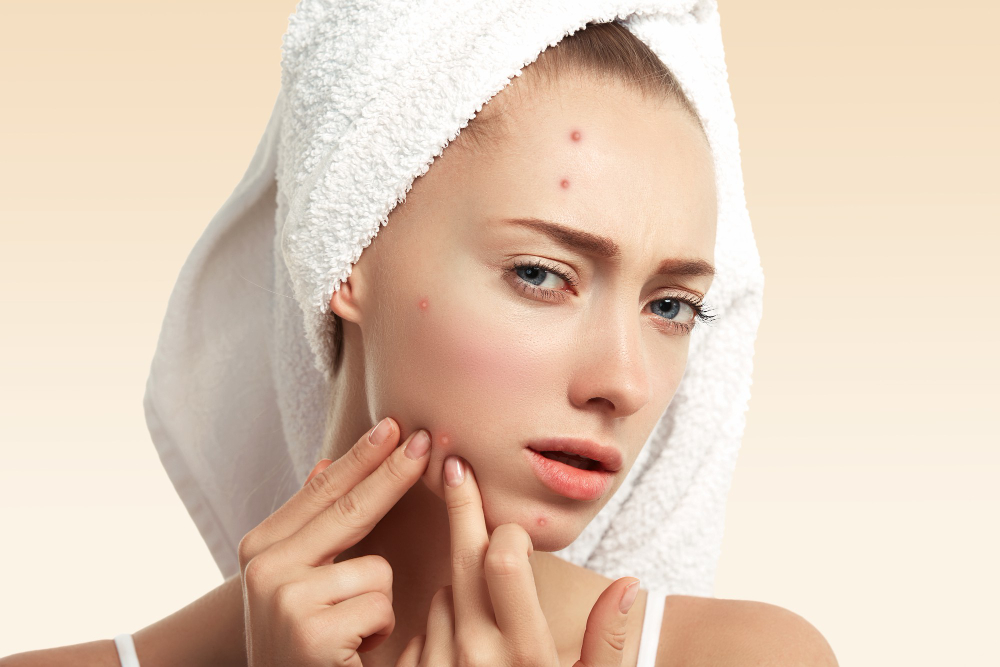Acne can be persistent, so it’s best to get a proper diagnosis and treatment plan to cure it.
1. Topical Treatments:
Topical treatments are often the first line of defense against acne. These include over-the-counter products containing ingredients like benzoyl peroxide, salicylic acid, and retinoids. They work by reducing inflammation, unclogging pores, and promoting cell turnover. Dermatologists can also prescribe stronger topical medications tailored to individual needs.
2. Chemical Peels:
Chemical peels are popular aesthetic treatments for acne-prone skin. They involve the application of a solution to the skin, which causes controlled exfoliation and stimulates skin regeneration. Chemical peels can help unclog pores, reduce oiliness, improve skin texture, and diminish the appearance of acne scars.
3. Microdermabrasion:
Microdermabrasion is a non-invasive procedure that uses a handheld device to exfoliate the outermost layer of the skin. By gently removing dead skin cells and unclogging pores, microdermabrasion can improve acne breakouts, reduce blackheads and whiteheads, and promote smoother skin texture.
4. Laser and Light Therapies:
Laser and light therapies offer advanced options for treating acne. These treatments work by targeting bacteria, reducing inflammation, and promoting skin healing. Common laser and light therapies for acne include:
– Intense Pulsed Light (IPL): IPL therapy targets the bacteria that contribute to acne breakouts while also addressing redness and pigmentation concerns.
– Blue Light Therapy: Blue light therapy kills acne-causing bacteria on the skin surface and helps manage active breakouts.
– Photodynamic Therapy (PDT): PDT combines a photosensitizing agent with light therapy to target and destroy acne-causing bacteria and reduce oil production.
5. Chemical Injection or Corticosteroid Injections:
For severe acne cysts or nodules, dermatologists may administer corticosteroid injections directly into the affected area. These injections help reduce inflammation and speed up the healing process, providing quick relief and preventing the formation of scars.
6. Fractional Laser Resurfacing:
Fractional laser resurfacing is an advanced treatment that targets both active acne and acne scars. The laser creates microscopic injuries in the skin, stimulating collagen production and promoting skin rejuvenation. This treatment can improve acne breakouts, reduce scarring, and enhance overall skin texture and tone.
7. Microneedling:
Microneedling, also known as collagen induction therapy, involves the use of tiny needles to create controlled micro-injuries in the skin. This process stimulates collagen production, promotes skin healing, and improves the appearance of acne scars. Microneedling can be combined with topical treatments or platelet-rich plasma (PRP) for enhanced results.
8.Roaccutane, also known as isotretinoin, is a powerful oral medication used to treat severe acne. It works by reducing oil production, decreasing inflammation, and preventing clogged pores. Roaccutane is typically prescribed when other acne treatments have failed, but it requires close monitoring due to potential side effects.
When it comes to managing acne, aesthetic treatments offer a wide range of options beyond traditional topical therapies. From chemical peels and microdermabrasion to laser and light therapies, these treatments target different aspects of acne, from active breakouts to acne scarring. Whether you’re dealing with occasional breakouts or persistent acne concerns, consulting with a dermatologist or qualified aesthetic professional will help determine the most suitable treatment plan for your skin. Embrace the power of aesthetic treatments and take a step closer to achieving the clear, radiant skin you desire.


